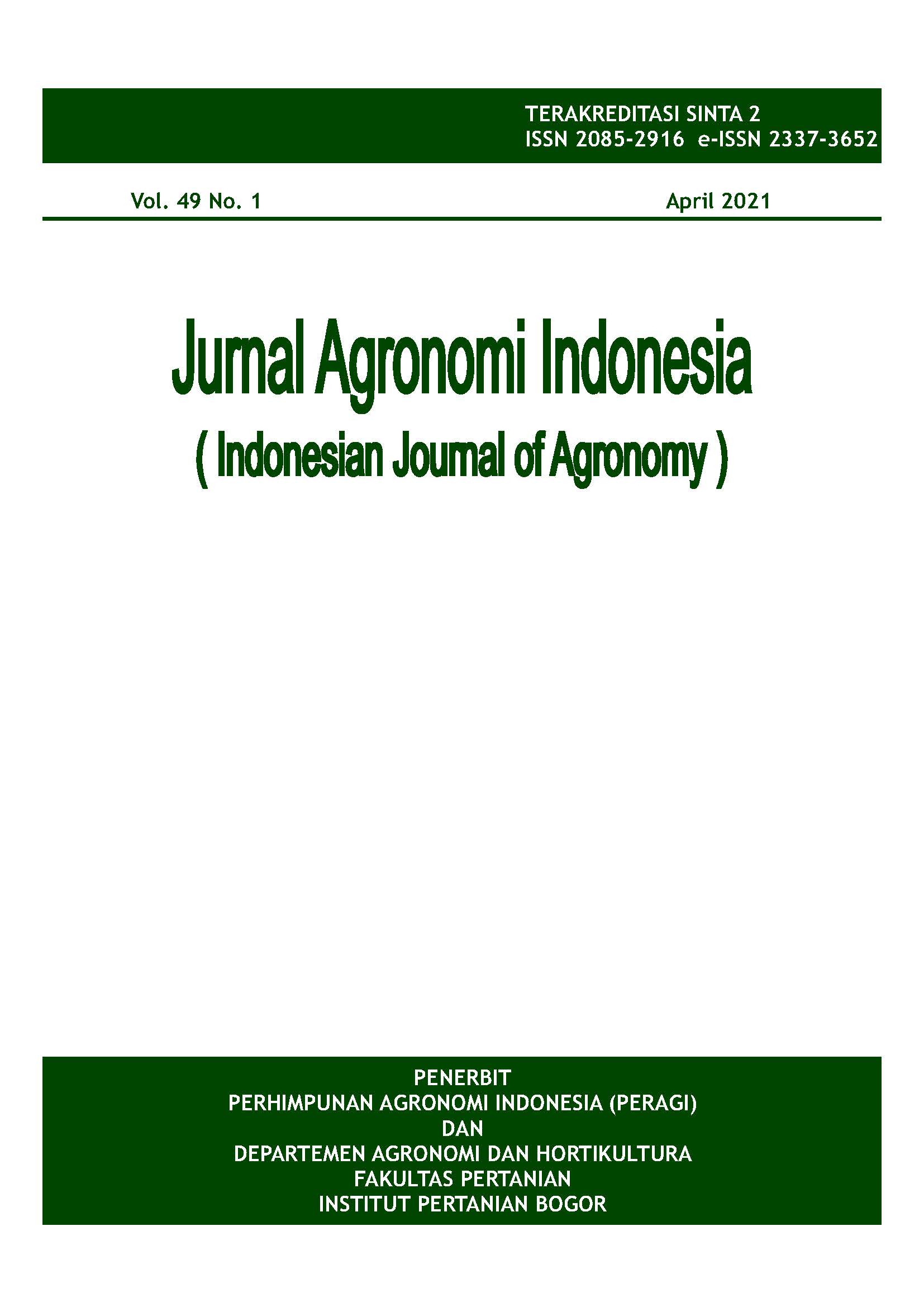Pertumbuhan dan Hasil Ratun Tiga Ekotipe Padi berdasarkan Tinggi Pemotongan Berbeda
Abstract
Rice ratoon is the practice of obtaining a second harvest from the previously harvested main crop’s tillers with a cultivation process that not only efficient in cost and time but also provides extra yield to the main crop. The research aimed to access the growth and yield of three rice ecotypes (lowland, upland and swamps) from different cutting heights. The experiment was carried out at the Babakan Experimental Station, IPB University during September-December 2019 using two factors of RCBD with three replications. The first factor was three ecotypes of rice, namey lowland rice (IPB 3S, Inpari 30), upland rice (Inpago 9, Inpago 10) and swamp rice (Inpara 8, Inpara 9), and the second factor was cutting height to stimulate ratoon growth (10, 20, 30, and 40 cm) from ground level. The results showed that IPB 3S and Inpago 9 with 20 cm height of cutting yielded a higher number of tillers. Productive tillers had a significant correlation with ratoon yield. It was concluded that cutting height on lowland rice (IPB 3S) of 30 cm and swamp rice (Inpara 8) of 20 cm produced the highest rice yield. Path analysis showed that number of grains directly affected ratoon yield.
Keywords: cutting height, node bud, path analysis













